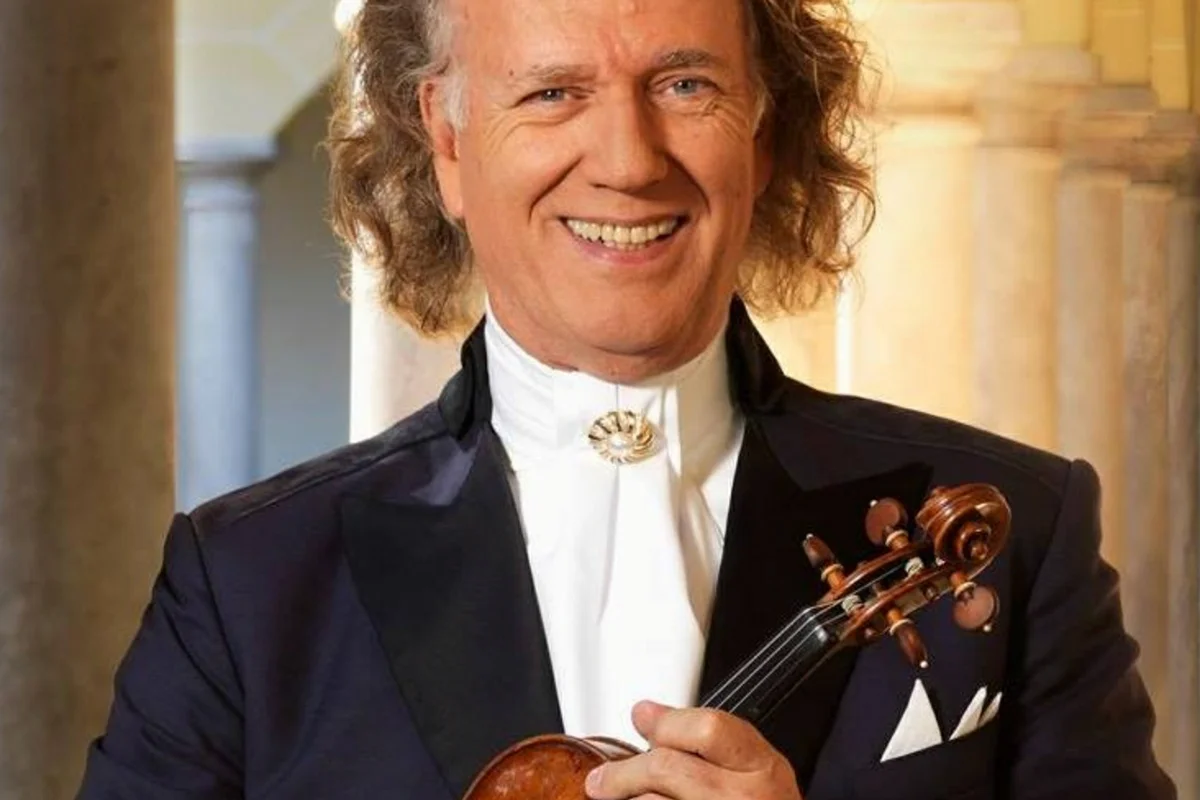
André Rieu
Wednesday, Nov 19, 2025
19:00:00
, Wien
Nestled within the vibrant heart of Vienna, Austria, the Wiener Stadthalle stands as an undisputed titan of live entertainment. Its Halle D, specifically, is not merely a venue; it is a crucible of musical history, a place where the roar of the crowd merges with the electrifying presence of global superstars. For decades, this hallowed ground has played host to an astonishing spectrum of artists, from the pioneers of rock to the reigning monarchs of pop, solidifying its reputation as one of Europe's premier concert halls. Halle D's immense scale, coupled with its surprisingly intimate feel for its capacity, creates an unparalleled visitor experience, drawing music lovers from across the globe to witness unforgettable performances under its expansive roof. This is where legends are made, and where every concert feels like a monumental event.
The story of the Wiener Stadthalle is intrinsically linked to Vienna's post-war reconstruction and its ambition to reclaim its status as a global cultural capital. Designed by renowned Austrian architect Roland Rainer, the complex was conceived as a multi-purpose venue, aiming to cater to a wide array of events beyond just concerts, including sports, trade fairs, and public gatherings. Construction began in the early 1950s, with the various halls, including Halle D, opening their doors between 1953 and 1958.
Rainer's architectural vision for the Stadthalle was bold and forward-thinking for its time. Halle D, in particular, is characterized by its distinctive, sweeping roof structure, a feat of engineering that allows for vast, unobstructed internal space. This design choice was not purely aesthetic; it was driven by the need to accommodate large audiences and diverse staging requirements, a crucial element for hosting major international tours. The integration of modern materials and construction techniques with a grand, almost monumental aesthetic aimed to create a building that was both functional and awe-inspiring, a symbol of Austrian resilience and cultural resurgence. The initial purpose was to provide Vienna with a modern, state-of-the-art facility capable of hosting events of international caliber, thus cementing its role as a significant fixture in the city's cultural landscape from its inception.
While Halle D was designed with versatility in mind, its destiny became undeniably intertwined with the world of live music. Over the decades, it has witnessed an astonishing evolution of popular music, acting as a stage for virtually every genre imaginable. Its capacity and logistical capabilities made it an essential stop for touring artists, positioning Vienna as a key destination on the international music circuit.
Beyond individual performances, the Wiener Stadthalle has also served as a significant platform for national and international cultural events. It hosted the Eurovision Song Contest in 1967 and again in 2015, showcasing its adaptability and its importance on a continental scale. These events, alongside the countless sold-out concerts, have etched Halle D into the collective memory of generations of music fans. Its consistent ability to attract top-tier talent and draw massive crowds underscores its enduring cultural impact, not just for Vienna but for the broader European music scene. The venue has consistently adapted to the changing demands of the live music industry, undergoing renovations and upgrades to maintain its status as a premier destination for both artists and audiences.
The Unique Selling Proposition (USP) of Wiener Stadthalle Halle D lies in its unparalleled ability to blend immense scale with a surprisingly intimate concert experience, making it a preferred venue for artists who demand both grandeur and a direct connection with their audience. This duality, coupled with its rich history, has made it a landmark for countless legendary performances.
The venue's ability to accommodate the sheer scale of production required by these global acts, while still allowing the audience to feel close to the performers, is a testament to its design and ongoing evolution.
The nearest major train station is Wien Westbahnhof, which is a hub for national and international rail services. From Westbahnhof, it is approximately a 10-15 minute walk to the Wiener Stadthalle. Alternatively, you can take a short U-Bahn ride.
Numerous bus lines service the area around the Wiener Stadthalle. Key routes include lines like 48A, which stops directly at the venue (stop: "Stadthalle"). Other useful routes include the 6, 9, 18, 49, 52, and 60 trams, which stop at or near the nearby Urban-Loritz-Platz or Kendlerstraße, both within a short walking distance.
For those driving, the Wiener Stadthalle is accessible via the Gürtel main road. However, parking in the immediate vicinity can be challenging, especially on event nights. Recommended Parking:
The Wiener Stadthalle is committed to providing accessible facilities for all visitors.
To ensure a smooth and enjoyable experience, please be aware of the following:
The capacity of Wiener Stadthalle Halle D can vary depending on the stage setup and seating arrangements. For concerts, it can typically hold between **9,000 and 16,000 spectators.**
You can reach Wiener Stadthalle Halle D via the U-Bahn (U3 line to Westbahnhof or U6 line to Burggasse-Stadthalle), trams (e.g., 6, 9, 18, 49, 52, 60), and various bus lines (e.g., 48A). Wien Westbahnhof is the closest major transport hub.
Yes, Wiener Stadthalle Halle D is largely wheelchair accessible. It features accessible entrances, ramps, elevators, and designated seating areas for wheelchair users. It is advisable to book accessible tickets in advance.
Door opening times vary for each event. Typically, doors open 1-2 hours before the scheduled performance start time. Always check the specific event details for the day of your visit.
Recommended parking options include the Parkgarage Urban-Loritz-Platz and Parkgarage Westbahnhof. Limited paid public parking may also be available on surrounding streets. Due to potential congestion on event nights, public transport is often the most convenient option.

Wednesday, Nov 19, 2025
19:00:00

Thursday, Nov 20, 2025
20:00

Sunday, Nov 23, 2025
20:00

Sunday, Nov 23, 2025
19:00:00

Saturday, Nov 29, 2025
19:00:00

Wednesday, Jan 7, 2026
20:00

Wednesday, Feb 18, 2026
19:00:00

Thursday, Feb 26, 2026
19:00:00

Monday, Mar 2, 2026
19:00:00

Tuesday, Mar 3, 2026
19:00:00

Friday, Mar 6, 2026
19:00:00

Monday, Apr 13, 2026
19:00:00

Monday, Jun 1, 2026
19:00:00

Monday, Oct 12, 2026
20:00